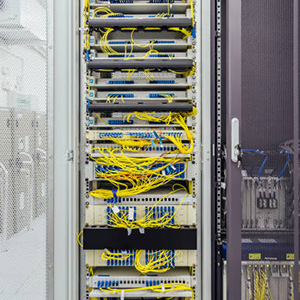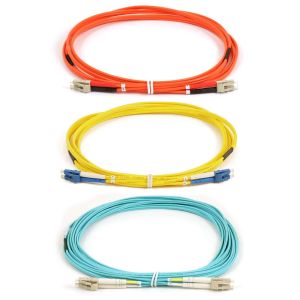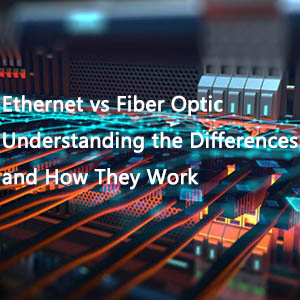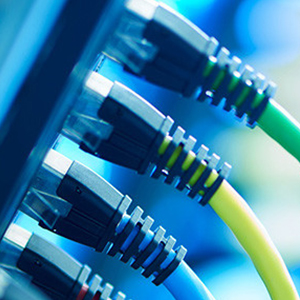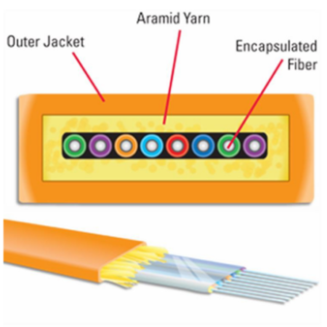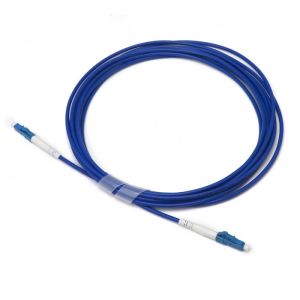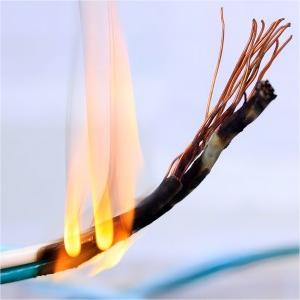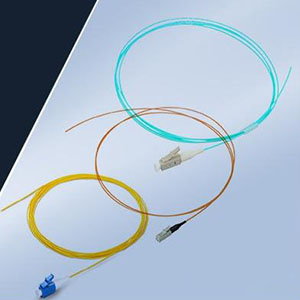In today’s modern era of advanced networks, fiber optic cables have become the backbone of communications, not only enabling lightning-fast data transmission but also maintaining extraordinary network performance. As demand for network configurations continues to grow, it is critical for network administrators and IT professionals to learn to understand the differences between the two major fiber optic cable designs: unarmored cable and armored cable.
What is an Unarmored Fiber Optic Cable?
Unarmored, or non-armored, fiber optic cables are characterized by their sleek and lightweight design. These cables are constructed with a protective outer jacket that covers the delicate optical fibers, but they lack the additional protective layers found in armored variants.
The primary advantages of unarmored fiber optic cables include:
Lower Cost
Without the need for specialized armoring materials, unarmored cables are generally more affordable than their armored counterparts. This can be an attractive option for budget-conscious deployments or projects with tight financial constraints.
Easier Installation
The flexibility and smaller size of unarmored cables make them simpler to navigate through congested pathways and tight spaces. This can streamline the installation process, reducing labor costs and enabling faster network deployments.
Compact Design
The streamlined construction of unarmored cables allows for more efficient storage and transportation, which can be beneficial for network operators with limited storage space or frequent cable relocations.
Unarmored fiber optic cables are well-suited for indoor applications or controlled outdoor environments with minimal physical risks, such as low-traffic areas or protected conduits. While they can be used in some outdoor deployments, the lack of additional protection means that unarmored cables may not be the best choice for harsh environments or applications where they may be exposed to physical damage, rodent activity, or extreme weather conditions.

What is an Armored Fiber Optic Cable?
Armored fiber optic cables incorporate additional protective layers to safeguard the delicate optical fibers from various physical threats. These layers typically include materials such as aluminum, stainless steel, or Kevlar, which provide enhanced resistance to impacts, crushing, and other forms of physical abuse.
The key benefits of armored fiber optic cables include:
Increased Physical Protection
Armored cables are designed to withstand harsh environmental conditions, including exposure to rodents, extreme weather, and heavy physical loads. This enhanced protection helps to prevent damage to the optical fibers, ensuring reliable data transmission and minimizing the risk of costly repairs or replacements.
Improved Durability
The additional protective layers of armored cables help to extend their lifespan and maintain their performance over time, even in demanding environments. This can lead to reduced maintenance costs and fewer network disruptions due to cable failures.
Suitability for Demanding Environments
Armored fiber optic cables are well-suited for outdoor deployments, underground installations, and industrial settings where the risk of physical damage is higher. These cables can provide the necessary protection to safeguard your network infrastructure in challenging conditions.
While armored fiber optic cables offer superior protection, they also come with some trade-offs. Armored designs are generally more expensive, bulkier, and less flexible than their unarmored counterparts, which can complicate installation and transportation.
Comparing Unarmored vs. Armored Cables
When deciding between unarmored and armored fiber optic cables, the primary consideration is the level of physical protection required for your specific networking application.
Unarmored cables are best suited for indoor environments or outdoor deployments with low physical risk, where the cost savings and ease of installation outweigh the need for enhanced protection. These cables are often the more cost-effective option upfront, making them a viable choice for projects with tighter budgets or applications that don’t require the added durability of armored designs.
Conversely, armored cables are the preferred choice for outdoor installations, underground deployments, and harsh industrial environments where the cables may be subjected to physical threats, such as impacts, crushing, or rodent activity. While armored cables are more expensive initially, they can provide a more reliable and cost-effective solution in the long run by reducing the risk of cable failures and maintenance costs.
It’s essential to carefully evaluate the deployment environment, potential risks, and long-term maintenance requirements when selecting the appropriate fiber optic cable solution. The added expense of protective measures, such as conduits, can quickly offset the initial cost savings of unarmored cables, making armored designs the more prudent choice for certain applications.
Types of Armored Cabling
There are several different materials used to produce armor for fiber. There are kevlar-impregnated jackets and composites, but most fiber armor makes use of metal, usually aluminum or stainless steel.
Aluminum Interlocking Armor (AIA): Strength and Durability
Aluminum Interlocking Armor (AIA) fiber optic cables are designed to withstand extreme physical abuse, making them suitable for applications in harsh environments such as petrochemical plants, asphalt facilities, and steel mills. These cables are constructed with a plenum or riser overall jacket, water-blocking Kevlar®, and an aluminum interlocking armor layer that encases the fiber core.
AIA cables can endure heavier loads and pulls compared to unarmored cables, offering protection against rodent bites, extreme weather conditions, and forceful handling. However, they are not immune to crushing or extremely heavy loads, which may be required in certain demanding environments.
While the durability of AIA cables is undeniable, their bulky size and heavyweight present significant challenges. These cables have a substantial footprint, making them expensive to store, transport, and deploy. Additionally, their inflexibility can hinder installation in tight spaces, often leading to the use of specialized machinery and increased labor costs.

Figure 2. Aluminum Interlocking Armor (AIA) Fiber Optic Cable
Here are a few key advantages of choosing Stainless Steel Micro Armor Fiber Cables:
- The smaller size footprint allows for easier installation through tight spaces, curved pathways, and congested areas.
- These cables offer exceptional flexibility, pushing the limits of what is physically possible with glass fibers.
- Crushproof Stainless Steel Micro Armor, combined with Kevlar and an outer jacket, provides superior armored fiber cable protection, mitigating the risk of damage in even the harshest conditions.
- The compact size translates to significant cost savings in storage, transportation, and labor associated with installation and handling.
- Micro Armor Fiber Cables are suitable for both indoor and outdoor installations, including underground deployments without the need for conduits (subject to local regulations).
Installation Best Practices for Unarmored and Armored Fiber Optic Cables
Proper installation is crucial for ensuring the long-term performance and reliability of your fiber optic network, regardless of whether you choose unarmored or armored cables. Here are some best practices to consider:
Cable Handling and Preparation
Ensure that you follow the manufacturer’s guidelines for cable handling, including recommended bend radiuses, pulling tensions, and installation temperatures. Proper cable preparation, such as stripping or termination, is also essential to prevent damage during the installation process.
Pathway Preparation
Thoroughly inspect and prepare the cable pathways before installation. Remove any debris or obstacles that could potentially harm the cables, and ensure that the pathways are adequately sized to accommodate the cable dimensions.
Cable Routing and Support
Proper cable routing and support are crucial to prevent excessive stress or strain on the cables. Follow recommended cable routing practices, including maintaining appropriate bend radiuses and providing adequate support at regular intervals.
Termination and Testing
Once the cables are installed, proper termination and testing are essential to ensure optimal performance and identify any potential issues. Follow the manufacturer’s guidelines for cable termination and conduct thorough testing, including optical time domain reflectometry (OTDR) and power meter testing.
Documentation and Labeling
Accurate documentation and labeling are crucial for future maintenance and troubleshooting. Maintain detailed records of cable routes, termination points, and any relevant installation details, and clearly label cables and termination points to facilitate identification.
By following these best practices, you can ensure the successful installation and long-term performance of your fiber optic cable network, regardless of the cable type chosen.
FiberLife Is Your Place to Buy Armored Cable
If you’re looking to buy amored cable for sale, FiberLife is your reliable manufacturer and supplier of high-quality amplifiers.
Headquartered in Hong Kong, FiberLife also sells fiber optic cables. They work with various clients worldwide to meet their needs. Get in touch with them today to buy optical amplifiers of all types.

